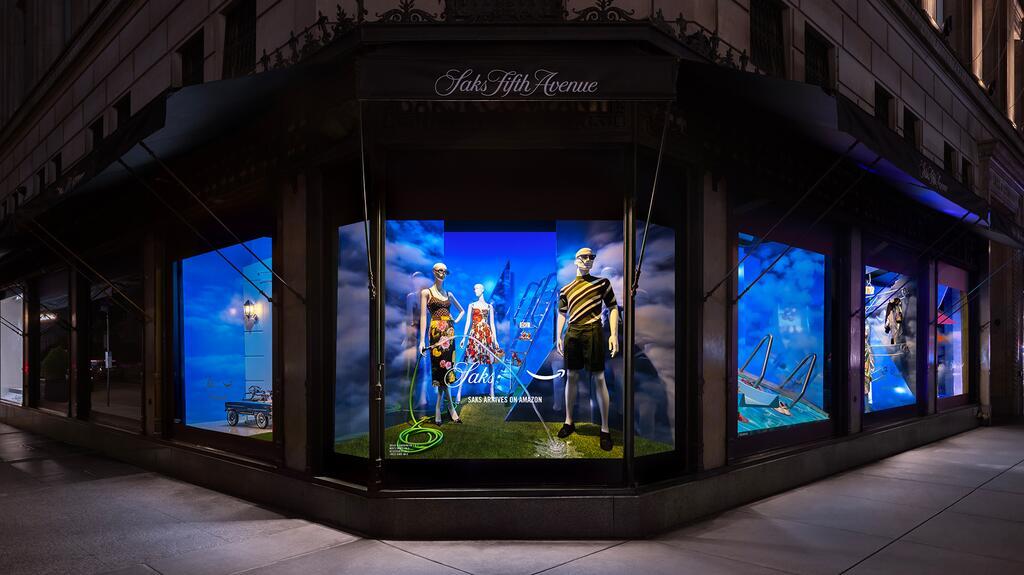Mohr had just retired in June after more than two decades as Couture’s retailer liaison.
Q3 Gold Jewelry Demand Slips 3% in US
But the market was relatively resilient compared with the rest of the world, where demand remains 'in the doldrums,' the WGC says.

London—The COVID-19 pandemic continues to have a negative effect, unsurprisingly, on gold jewelry demand.
According to the World Gold Council’s Gold Demand Trends report for Q3, demand lifted from its record low in the second half, but was still “in the doldrums,” hampered by the global economy and high gold prices.
According to Kitco, gold peaked at $2,067.15 per ounce in August before slowing down, averaging a per-ounce price of $1,900.27 in October. It started the year at $1,560.67 per ounce (average) in January.
Global jewelry demand was at 333 tons in the third quarter, registering its third-lowest quarterly total in WGC’s data going back to Q1 2001 and representing a 29 percent decrease over the same period last year.
Comparing in value terms is “less stark,” WGC said, noting Q3 jewelry demand was at $20.4 billion, only an 8 percent decrease year-over-year.
The lift it did have over the second quarter was due to most markets seeing at least some relaxation in the strictest lockdown measures, according to the report, with some also seeing a notable shift toward online shopping.
Meanwhile, gold jewelry demand year-to-date totaled just 904 tons, the lowest in the council’s data series “by some margin”—it’s a 30 percent decease compared with the same period in 2009, when demand was 1,292 tons.
WGC said though China and India were major contributors to the global weakness because of their significance to the market, weakness was universal, with “no bright spots of note.”
The U.S., however, proved to be “relatively resilient” compared with global markets, posting a small decline of 3 percent year-over-year in the third quarter.
In-store demand was still “anemic” in the third quarter as consumers avoided shops and malls; online sales picked up a lot of that loss, WGC added.
Meanwhile, as China returned to a more normal state post-lockdown in the third quarter, jewelry demand continued its recovery from Q1 lows but stayed very soft compared with the same period in 2019.
The region’s gold jewelry demand was 119.1 tons in Q3, representing a 31 percent rebound from Q2. And though it marked a 25 percent year-over-year decline, the gold council said it was still much smaller than the 52 percent drop in H1 demand.
RELATED CONTENT: Gold Passes $2K Per Ounce as Jewelry Demand Plummets
Year-to-date demand in China hit 271 tons, a 43 percent decrease over the first nine months of 2019.
Gold jewelry demand in the region was 48 percent lower year-over-year at 52.8 tons, which WGC said was the third-lowest quarter for Indian jewelry demand in its data series.
Consumers there not only were coping with recurring lockdowns and their heavy economic impact as well as unprecedented gold prices, but also the timing of two Hindu celebrations in September being considered inauspicious for gold buying.
Demand was also weak in Turkey and across the Middle East as well as in Europe, where gold demand decreased 17 percent compared with the year-earlier period. But Europe’s Q3 results also meant a 32 percent quarterly improvement, reflecting a release in pent-up demand as lockdowns eased.
Demand for gold overall dropped to 892.3 tons in the third quarter—its lowest quarterly total since Q3 2009—as the global pandemic continued to effect consumers and investors alike.
At 2,972.1 tons, year-to-date demand is 10 percent below the same period of 2019.
Supply was also down in Q3, declining by 3 percent year-over-year to 1,224 tons.
Mine production also decreased by 3 percent to 884 tons as the industry continue to suffer from COVID-19 restrictions, though the World Gold Council noted it still marks a substantial recovery over Q2.
Year-to-date, total supply was down 5 percent over the same period in 2019 due to disruption from the pandemic.
The Latest

Shekhar Shah of Real Gems Inc. will serve as president of the Indian Diamond & Colorstone Association in 2026.

This year’s good luck charm features the mythical horse Pegasus, and is our first Piece of the Week of the new year.

How Jewelers of America’s 20 Under 40 are leading to ensure a brighter future for the jewelry industry.

Articles about crime, engagement rings, and a necklace worn in the World Series generated the most interest among readers.


It marks the third time the country has headed the Kimberley Process. Ghana will serve as vice chair.

The new Bulova x Stetson designs highlight two animals often associated with the American West—the bison and the Texas Longhorn.

Roseco’s 704-page catalog showcases new lab-grown diamonds, findings, tools & more—available in print or interactive digital editions.

Its residency at Yamron Jewelers will run through May 2026.

From influential executives to innovative designers, we pay tribute to the people we said goodbye to this year.

The retailer is expanding into areas with large Indian and South Asian populations.

The Italian brand has opened its first flagship amid the peaks of the Dolomites in Madonna di Campiglio, Italy.

The new curation at the Natural History Museum of Los Angeles County showcases rare gem and mineral specimens in their uncut, natural state.

The couple pleaded guilty to concealing at least $127 million in cash transactions at its precious metals businesses.

Consumers shared concerns about prices, inflation, tariffs, trade, and politics in the survey’s write-in response section.

In February 2026, the auction house will move its headquarters to the former Steinway Hall, a neoclassical landmark on Billionaires’ Row.

The new show will take place Jan. 23-25, 2026.

The former BHP Billiton leader and Gemfields chairman is remembered for his influential leadership throughout his 50-year mining career.

The LVMH-owned brand has partnered with the costume design union to revamp its award for 2026.

The luxury titan inked a deal to acquire an initial minority stake in the jewelry manufacturer with a pathway to full ownership by 2032.

The company’s curation of unsigned vintage and estate jewelry debuted at the Bloomingdale’s in Costa Mesa, California.

In the recent multi-shipment seizure, CBP also found counterfeit Audemars Piguet, Moncler, and Chrome Hearts items.

Helzberg’s Chief Retail Officer Mitch Maggart shared details about its tests of a new store concept rooted in an elevated luxury experience.

Jewelers of America execs and National Jeweler editors discuss tariffs, the sky-high gold price, and the engagement that broke the internet.

The luxury goods company said founder Ippolita Rostagno will remain at the brand’s helm.

Laura Burdese, who joined the Italian luxury brand in 2022, will take on the role in July.

The National Jeweler editors revisit the most noteworthy industry happenings and design trends from 2025.


























